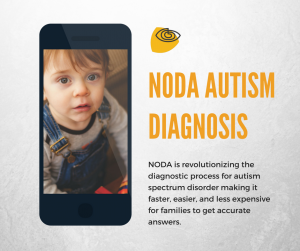Autism’s Care Gap: When Resources Don’t Meet Demand
For families of children diagnosed with Autism, choosing the right treatment option can be daunting. For many families, however, the choice is made for them due to limited resources and high demand for care in many areas. For these families, new telehealth technology can help provide access and options they may not otherwise have in their region.
A 15% Increase in Diagnosis
This year, the CDC reported a 15% increase in the prevalence of autism diagnosis from 1 in 68 to 1 in 59 children. Compare this number to data from the American Board of Pediatrics that recognized only 800 board-certified Developmental-Behavioral pediatricians at the end of 2016. That’s out of 118,200 pediatricians nationwide. While the increase in diagnoses most likely reflects an increase in awareness and better diagnosis tools, it doesn’t change the fact that more children are in need of autism diagnosis and treatment than ever before, and there are few specialists to assist them.
The Link Between Treatment Options and Geography
A recent study found a significant correlation between autism treatments used and where a family lives. Researchers from University of Houston and Baylor College of Medicine collected data from 2,647 families across the United States and in Montreal, Quebec. Children living in the Northeast and Western regions of the United States are more likely to have tried a variety of therapies, compared to children in the South or Midwest who are more likely to be taking medication as treatment. Families reporting use of no treatment came primarily from the South and Montreal.
This information correlates to a Stanford University School of Medicine study regarding access to diagnoses and treatment centers around the country. The study found that 70% of people live within 30 miles of an autism diagnostic center, but the average distance traveled to a center is 50 miles. Once diagnosed, access to therapists is similarly limited, with the demand for treatment 18 times larger than the available supply of caregivers.
This lack of access is even more stark in low-income areas where families on Medicaid face year-long waits to see providers, generally due to low Medicaid reimbursement rates, with South Carolina paying ABA technicians only $17 per hour.
Lack of Access = Lack of Choice
It comes as little surprise, then, that families in Midwest and Southern states would turn to medication over various forms of therapy, because they simply don’t have access to therapists. While there are certainly advantages and disadvantages to all treatment options, in an ideal world, each family would have the full realm of options available to them and the freedom to choose what is best for their child.
Telehealth Technology Can Help Bridge the Gap
At Behavior Imaging, we hope that emerging advances in telehealth technology will help bridge the gap and increase access to autism diagnosis and treatment options. With the NODA diagnosis app, families can skip the months-long wait and long travel times to visit a diagnosis center. Instead, smart phone technology empowers families to send video to trained clinicians and receive a diagnosis within weeks instead of months. Recent research conducted by the Behavior Imaging team found that the average total time associated with obtaining an ASD assessment in person was 118 days, while that time was cut in half to 59 days using the NODA program.
After diagnosis, telemedicine can become a valuable resource for families creating a treatment plan. Behavior Connect is an online portal that connects families and specialists, allowing them to remotely capture, assess, and analyze behavior. Behavior Connect makes it easy to remotely perform world class Functional Behavior Assessments (FBA) and track and manage medication.
Families Deserve Access and Options
Raising a child with autism comes with enough challenges as it is. Having access to care shouldn’t be one of them. Through telehealth technology, we hope that eventually families in all regions of the United States will have access to the care that best suits the needs of their children.






